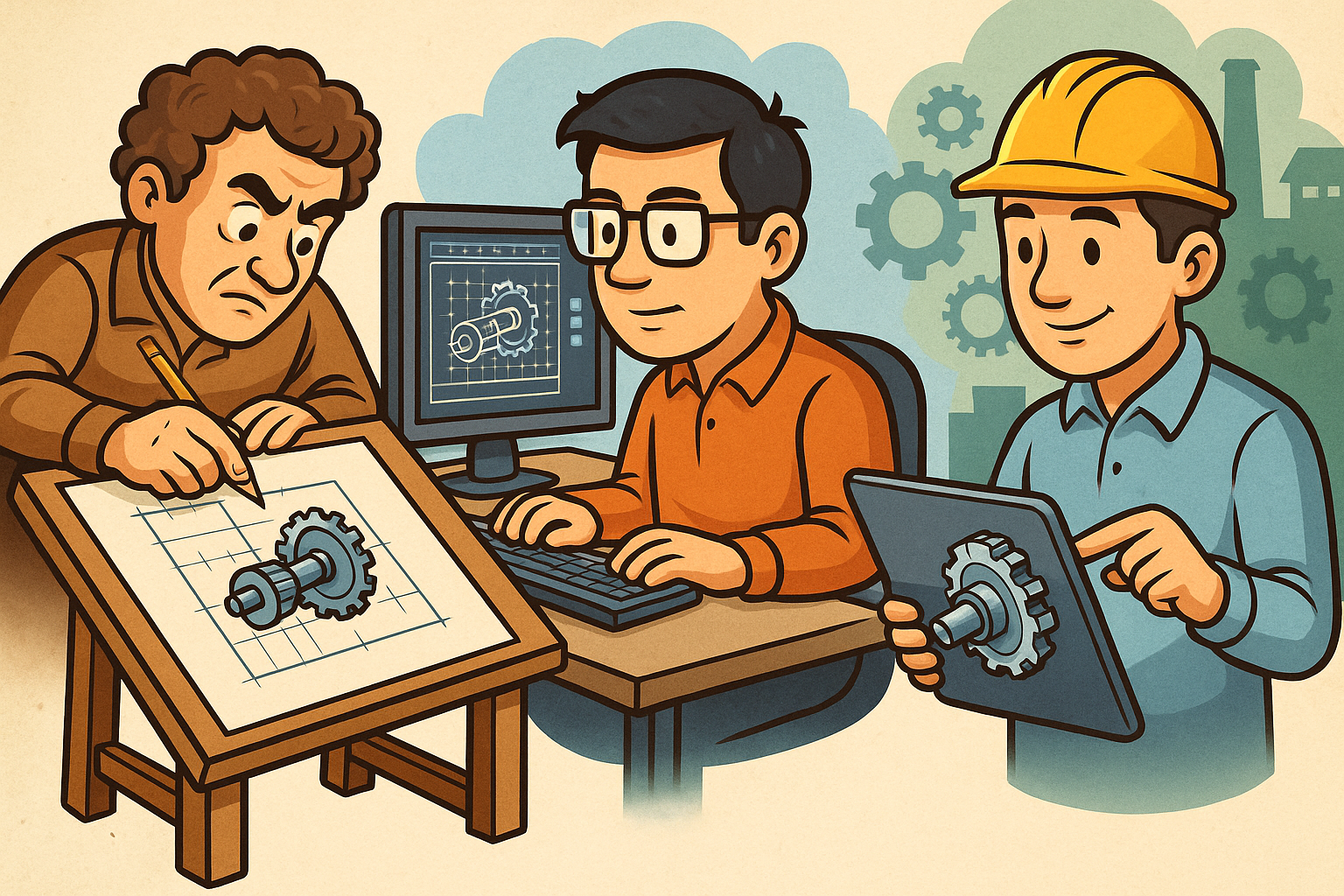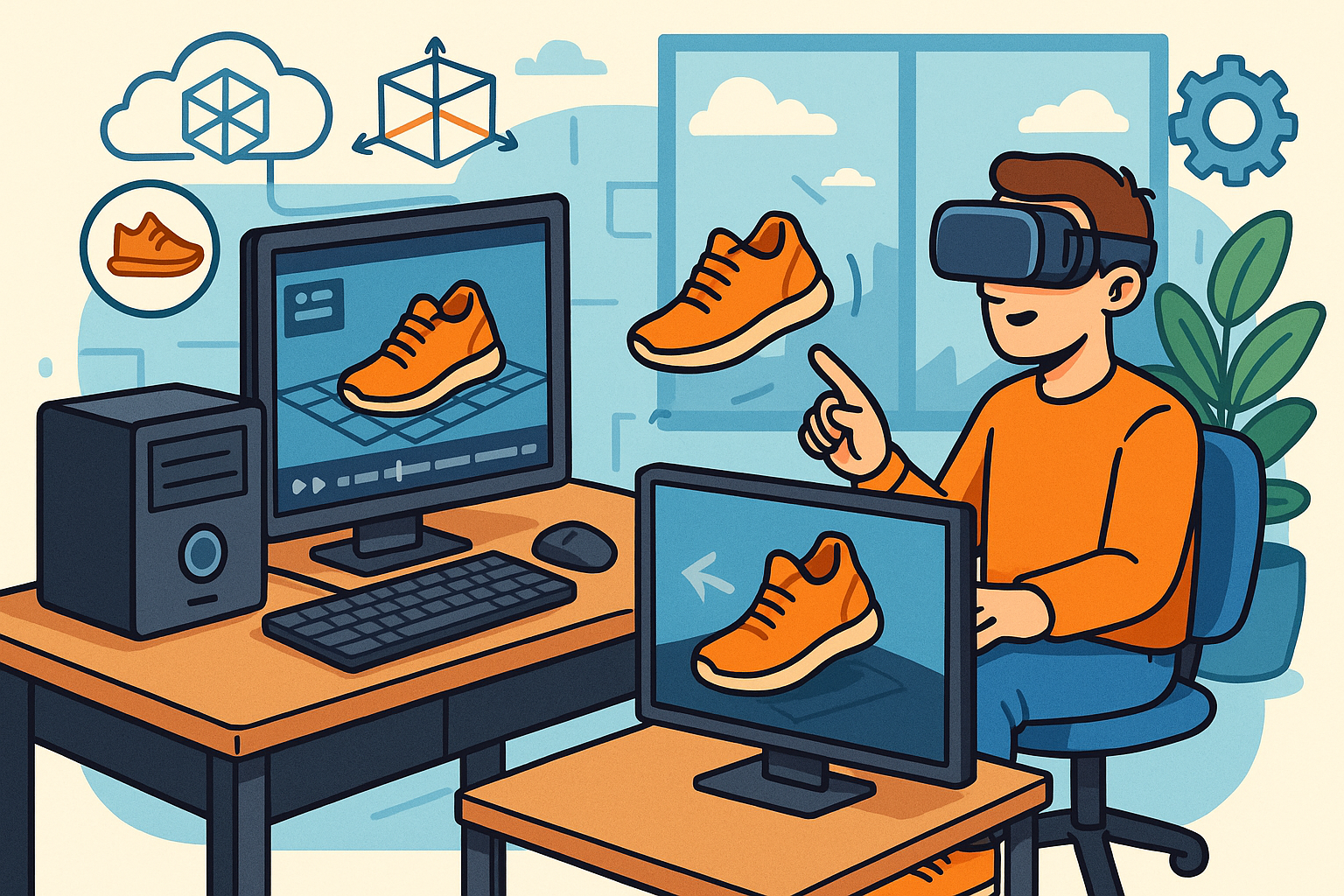Your Cart is Empty
"Great customer service. The folks at Novedge were super helpful in navigating a somewhat complicated order including software upgrades and serial numbers in various stages of inactivity. They were friendly and helpful throughout the process.."
Ruben Ruckmark
"Quick & very helpful. We have been using Novedge for years and are very happy with their quick service when we need to make a purchase and excellent support resolving any issues."
Will Woodson
"Scott is the best. He reminds me about subscriptions dates, guides me in the correct direction for updates. He always responds promptly to me. He is literally the reason I continue to work with Novedge and will do so in the future."
Edward Mchugh
"Calvin Lok is “the man”. After my purchase of Sketchup 2021, he called me and provided step-by-step instructions to ease me through difficulties I was having with the setup of my new software."
Mike Borzage
April 21, 2025 7 min read


In contemporary discussions about sustainable technology, the term renewable energy resource optimization has grown into an essential concept that encapsulates the interdisciplinary efforts to improve the efficiency, planning, and operation of renewable energy systems. This optimization process is at the heart of designing solutions that not only meet today’s energy demands but are also scalable and adaptable for future technological advancements. Although the introduction to these discussions can be kept brief, it is imperative to understand that the inception of design software has been instrumental in transitioning industries from purely manual, labor-intensive analysis in the early days of renewable energy exploration to modern automated and precision-driven methodologies. Historically, renewable energy resource optimization was mostly reliant on rudimentary calculations and rudimentary drafting techniques that did not fully capture the complexities of natural resource variability. Early renewable energy projects had to contend with limited data and simple calculation techniques, which often led to inefficiencies or overly conservative designs that did not exploit the full potential of renewable resources. The intersection of renewable energy with emerging digital technologies marked an important turning point in the way these projects were planned and executed. As digital tools emerged, they brought with them opportunities to incorporate advanced modeling, simulation, and iterative refinement into the design process. Initially, engineers had to rely on manual data interpretation and hand-drawn representations. However, over time, the integration of computers into design workflows revolutionized these practices. The period marked by the emergence of computer-aided design (CAD) systems saw a gradual but profoundly impactful shift in methodologies. With innovative systems coming online, engineers and designers could visualize complex energy flows, simulate performance under different environmental conditions, and thereby optimize renewable energy layouts in ways that were previously unimaginable. In addition to these technological shifts, early design methodologies began incorporating the use of digital aids and rudimentary algorithms to address the challenges inherent in renewable energy resource optimization. Notable early efforts were characterized by the application of computerized plotting and rudimentary analytical models that set the stage for what would evolve into more robust computer-aided engineering tools. Several key points illustrate the transformation of design processes during this era:
The historical evolution of design software in the context of renewable energy resource optimization is a narrative marked by continuous innovation and progressive sophistication in digital modeling capabilities. Early computer-aided tools, pioneered in the mid-20th century, laid the groundwork for what would become an intricate and vital ecosystem of design and simulation applications. Among the foremost advancements was the transformation from simple 2D drafting systems—tools that allowed engineers to create basic, yet critical, diagrams to represent renewable energy installations—to advanced 3D modeling platforms that offer highly detailed and interactive experiences. This transition was not instantaneous; it represented a series of technological breakthroughs and iterative improvements. At the center of these breakthroughs were the pioneering efforts to incorporate mathematical models into the design process. One of the most influential shifts came with the advent of parametric design methodologies, which allowed designers to create models that could automatically adjust and optimize parameters according to changing variables such as sunlight intensity, wind patterns, and geographical constraints. The introduction of finite element analysis enabled engineers to simulate real-world scenarios and predict how renewable energy systems would perform under a variety of stress factors and environmental conditions. Such advancements enabled the shift from traditional trial-and-error methods to approaches that were more systematic, predictive, and responsive. Key technological innovations also emerged from the concerted efforts of influential companies and visionary innovators. For instance, the contributions of Dassault Systèmes were pivotal in integrating design, simulation, and data management in a single cohesive environment. Similarly, the technological advancements made by PTC and Siemens PLM were crucial in driving the integration of simulation capabilities into design software, thus streamlining processes from initial concept to final product realization. The following key elements are demonstrative of the milestones and innovations that reshaped design practices:
The integration of advanced design software into renewable energy projects has redefined the way industry professionals approach project planning, execution, and monitoring. The implementation of these tools has had a profound impact on the optimization of renewable energy systems, resulting in significant improvements in design accuracy, resource allocation, and overall project efficiency. A well-documented area of progress has been the use of digital models to conduct comprehensive analyses of energy potential in diverse geographical locations, leading to better-informed decisions about wind farm layouts, solar panel placements, and other renewable installations. The enhanced visualization and simulation capabilities provided by modern design software have allowed engineers to run multiple scenarios and optimize system designs without the need for time-consuming physical prototypes or extensive trial-and-error experiments. In practice, engineering teams have leveraged the power of design software to integrate real-world data into simulation models, which makes the planning process far more robust and adaptive. For example, detailed aerodynamic modeling of wind flows over varied topographies or solar irradiation models that account for seasonal variations have enabled designers to maximize energy production efficiency while minimizing costs. The impact of these technologies extends beyond simple design optimization; they have revolutionized project management aspects by coordinating various stages of the planning and execution processes into a cohesive digital framework. This comprehensive integration has significantly reduced design cycles, increased reliability, and improved the resilience of renewable energy systems. Among the operational impacts of design software are:
Reflecting on the historical journey of design software within the renewable energy landscape reveals a comprehensive narrative of technological ingenuity and persistent evolution. The progression from manual drafting techniques through early computerized analysis and eventually to the sophisticated 3D modeling and simulation platforms available today has been nothing short of transformative. At its core, the evolution of design software for renewable energy resource optimization symbolizes an enduring commitment to improving system efficiencies and ensuring that renewable energy infrastructure is as robust, reliable, and high-performing as possible. The lessons gleaned from the development of early CAD systems through to the advanced parametric design methods of the present day highlight an industry that has continuously adapted and refined its tools to meet the challenges of an ever-changing energy landscape. The role of innovators and companies such as Dassault Systèmes, PTC, and Siemens PLM cannot be understated. Their breakthroughs have provided the platform for iterative enhancements, enabling design software to evolve into an integrated and adaptive medium that supports a range of critical applications—from wind farm layout optimization to advanced simulation of energy systems under varying environmental stresses. The integration of simulation tools and the application of finite element analysis in renewable energy projects have not only shortened design cycles but have also dramatically increased the predictability and efficiency of these systems. This synthesis of early methodologies with cutting-edge digital experiments has encapsulated the spirit of innovation that continues to drive improvements in renewable energy resource optimization. As we look to the future, emerging technologies such as AI and machine learning are poised to further catalyze this evolution, promising even more powerful tools for predicting performance and optimizing resource distribution. Moreover, the shift towards integrated project management solutions, which lean heavily on advanced design software, will continue to diminish design uncertainties and enhance system resilience at a global scale. The historical trajectory of design software, therefore, offers not only a blueprint for understanding past innovations but also a roadmap for continued development in sustainable design practices. The legacy of innovation and continued research in design software ensures that renewable energy projects will remain at the forefront of technological and environmental progress, ultimately shaping the future of how we harness nature’s most abundant resources.

July 25, 2025 9 min read
Read More
July 25, 2025 7 min read
Read More
July 25, 2025 3 min read
Read MoreSign up to get the latest on sales, new releases and more …